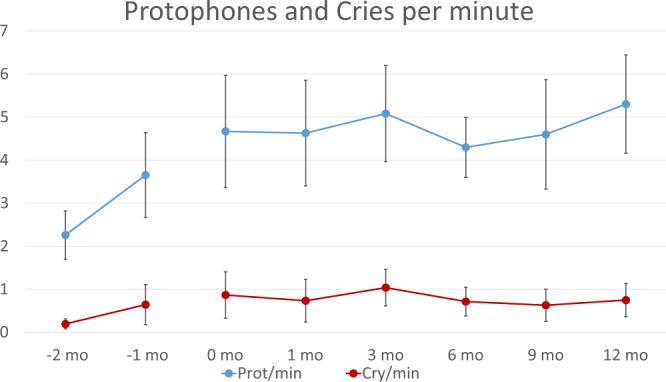Figure 2.

Vocalization rates in preterm and full-term humans. Protophones are infant sounds produced mostly in exploration or play rather than in social interaction. The figure illustrates that protophones/minute generally exceeded cries/minute by a factor of >5 (error bars represent 95% confidence intervals, computed based on the raw data from each infant and independent of the modeled data from the GEE analyses) in randomly-selected five-minute infant-awake segments from all-day audio recordings. Even in the preterm infants, protophones were plentiful, more than two per minute even at two months before due date, suggesting deep natural selection for the tendency to produce endogenous vocalization in humans. GEE analysis indicated a significant increase in the protophone rate for preterms from - 2 to -1 month of age. The differences between protophone and cry rates were massively significant by t-tests. The groups of infants recorded longitudinally were 20 preterms at -2 and -1 month of age (that is, 32 and 36 weeks gestational age), 9 full term infants at 0 months (that is, during the first month after full term birth) and the same 9 plus 3 additional full-term infants through 12 months. Each infant at each age provided an all-day recording from which 24 five-minute segments were randomly selected for the human coding that yielded the estimated rates of vocalization.
